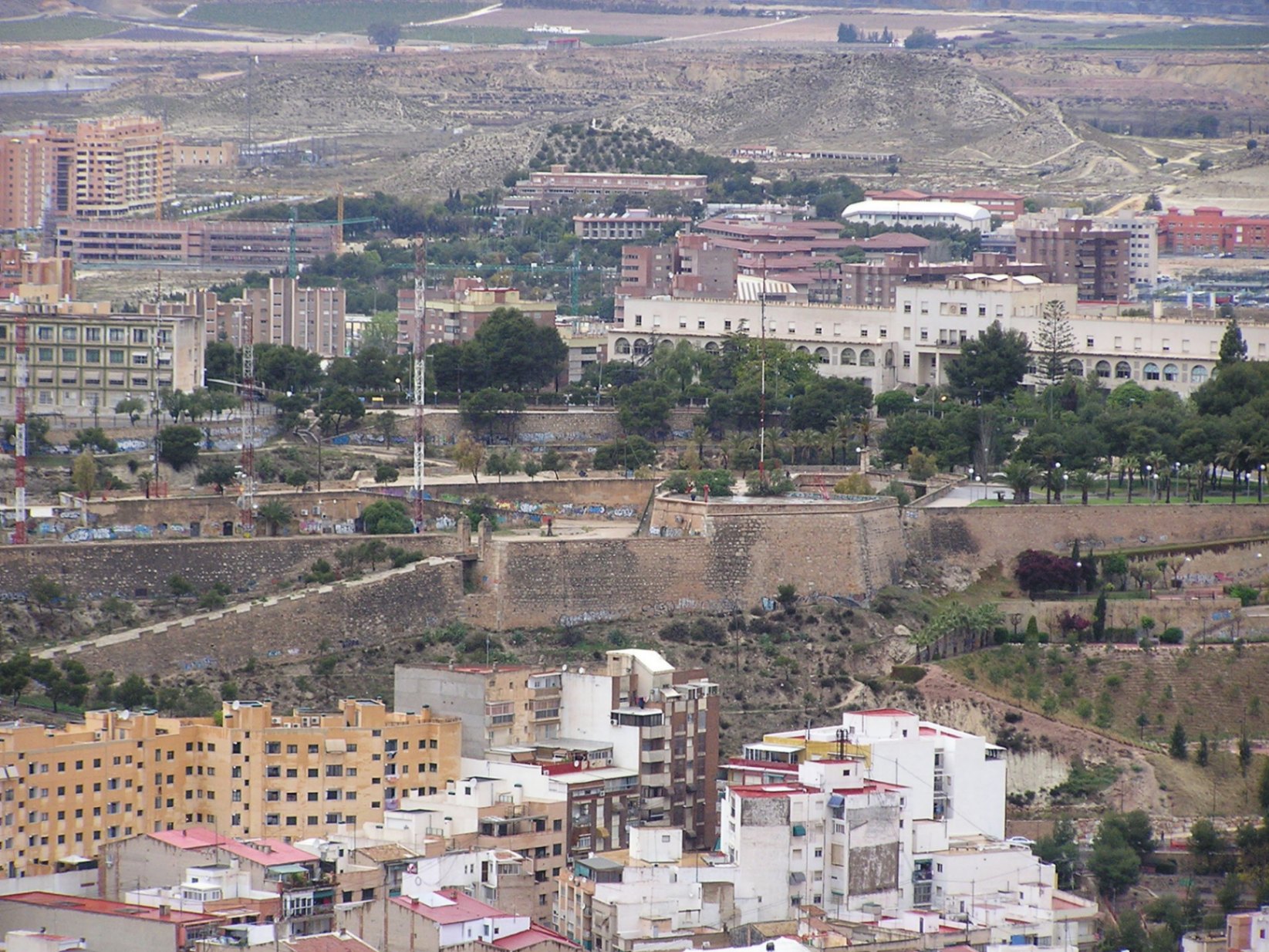Countries<Spain<Comunidad Valenciana<Alicante< Castillo de San Fernando
It was built with the purpose of being a prison and to reinforce the defence possibilities of the castle of Santa Bárbara. It never came into service, as there was no French occupation of Alicante.
It was a work that was built quickly and badly, as it soon began to show deficiencies, as well as being militarily useless and costly. Next to the entrance to the castle is the Monument to the Alicante Heroes of Independence.
In 1939, when Franco's troops took the city at the end of the Civil War, they used the fortification as a concentration camp to house the enormous number of Republican prisoners in their power. It served this function until the end of that same year.
Nowadays, the slopes of the hillside are home to Alicante's sports city, the Óscar Esplá music conservatory, the Ruiz de Alda Park, which conserves the statue of Doctor Rico by Daniel Bañuls, the driving force behind the reforestation of the Tossal at the beginning of the 20th century, and the Jorge Juan Secondary School.
Another of the monuments located around the castle is the so-called Cross of the Century, erected in 1901 and rebuilt in 1940 to commemorate the entry into the 20th century.
The layout of this fortress is irregular, adapting to the topography of the hill on which it stands. It consists of a geometric polygonal bastion on the northern front and another rounded, truncated cone-shaped bastion at the southwest end, which were linked by broken curtains. It also had two half bastions and another small bastion on the most vulnerable sides of the hill. Only in this area was a moat built, as the rest was protected by the rocky escarpment. Under the entire embankment, artillery-proof vaults and a cistern were also built. The interior of the castle housed the quarters for housing the troops. Access to the castle was via a zigzag ramp. Two quadrangular jambs were erected at the main entrance gate, each crowned by a stone lion sitting on its hindquarters with its mouth slightly open, which may not correspond to the original construction.
The castle has cracks, the extent of which is being studied. It is currently closed to the public due to restoration work on this fortress in Alicante.
Se hizo con el propósito de ser una prisión y para reforzar las posibilidades de defensa del castillo de Santa Bárbara. Nunca llegó a entrar en servicio, ya que en Alicante no llegó a haber ocupación francesa.
Fue una obra que se construyó deprisa y mal, pues al poco tiempo empezó a mostrar deficiencias, además de ser militarmente inútil, a la vez que costosa. Junto al acceso al castillo se encuentra el Monumento a los Héroes Alicantinos de la Independencia.
En 1939 las tropas franquistas, con la toma de la ciudad al final de la Guerra Civil, utilizaron la fortificación como campo de concentración para albergar la enorme cantidad de prisioneros republicanos en su poder. Desempeñó esta función hasta finales de ese mismo año.
En la actualidad, en las laderas del monte está la ciudad deportiva de Alicante, el conservatorio de música Óscar Esplá, también se encuentran el Parque de Ruiz de Alda que conserva la estatua del Doctor Rico obra de Daniel Bañuls, impulsor de la reforestación del Tossal a principios del siglo XX; y el IES Jorge Juan.
Otro de los monumentos situados en los alrededores del castillo, es la denominada Cruz del Siglo levantada en 1901 y reconstruida en 1940 para conmemorar la entrada en el siglo XX.
El trazado de esta fortaleza es irregular, adaptándose a la topografía del cerro sobre el que se asienta. Consta de un baluarte poligonal geométrico en el frente septentrional y otro redondeado troncocónico en su extremo suroeste, que estaban unidos por cortinas de trazado quebrado. Contaba además con dos medios baluartes y otro de reducidas dimensiones situados en los frentes más vulnerables del monte. Únicamente en esta zona se construyó un foso, ya que el resto quedaba protegido por el escarpe rocoso. Se realizaron también, bajo todo su terraplén, bóvedas a prueba del fuego artillero y una cisterna. En su interior albergaba las dependencias para el alojamiento de las tropas. Al castillo se accedía mediante una rampa en zigzag. En la puerta de acceso principal se levantaron dos jambas cuadrangulares coronadas por sendos leones de piedra sentados sobre sus cuartos traseros y con la boca ligeramente abierta, que posiblemente no correspondan a la obra primitiva.
El castillo tiene grietas cuyo alcance se está estudiando. En la actualidad permanece cerrado al público debido a obras de restauración de esta fortaleza alicantina.
